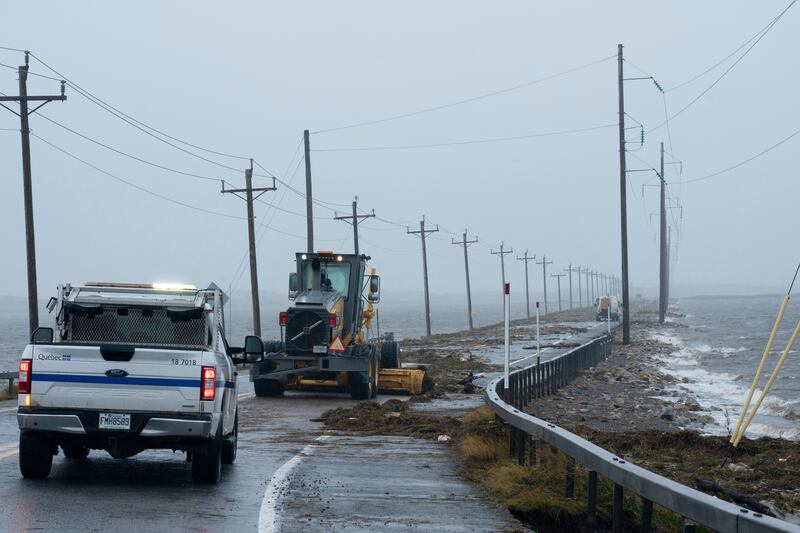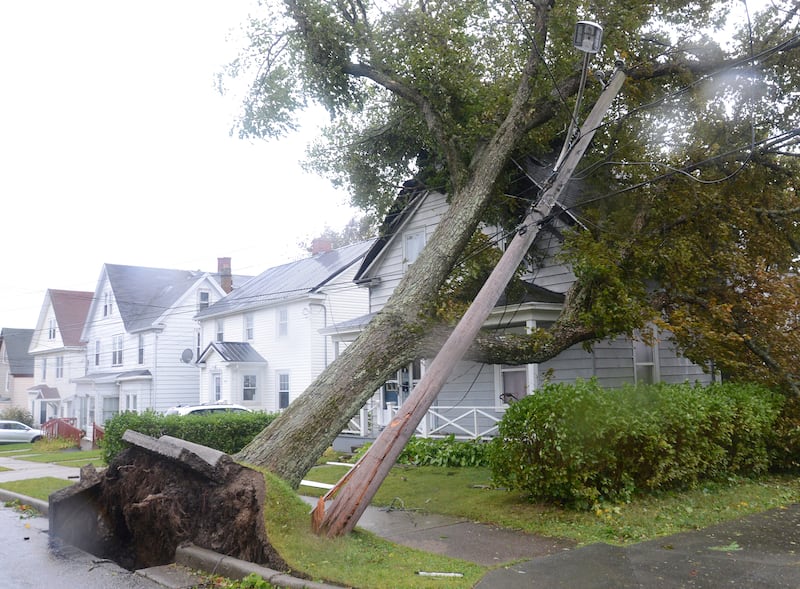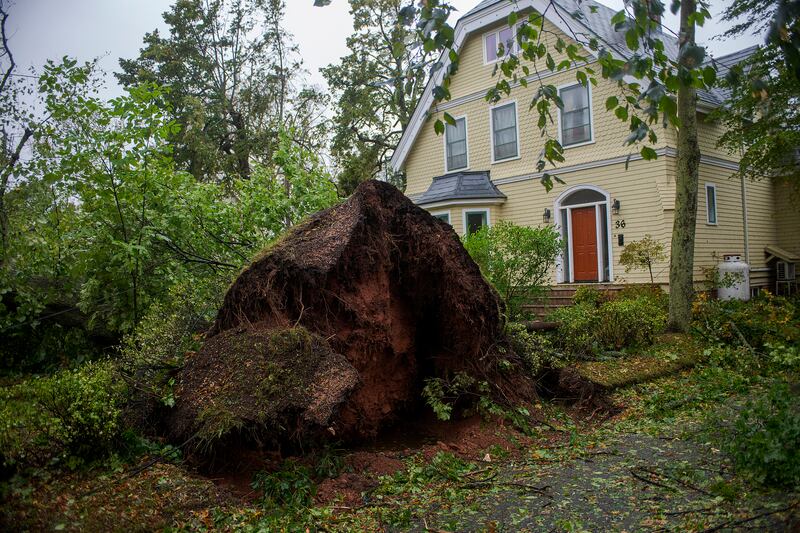Storm Fiona washed houses into the sea, tore the roofs off others and knocked out power to the vast majority of two Canadian provinces on Saturday as it made landfall as a big, powerful post-tropical cyclone.
Fiona transformed from a hurricane into a post-tropical storm late on Friday, but it still had hurricane-strength winds and brought drenching rains and huge waves. There was no confirmation of fatalities or injures.
Ocean waves pounded the town of Channel-Port Aux Basques on the southern coast of Newfoundland, where entire structures were washed into the sea. Mayor Brian Button said on Saturday over social media that people were being evacuated to high ground as winds knocked down power lines.
“We’ve already had houses — that are washed away,” he said.
Actor Armie Hammer resurfaces as host of celebrity podcast
Heart-stopping Halloween terror: 13 of cinema’s greatest jump scares
Doctor Odyssey’s core message: just imagine Pacey from Dawson’s Creek holding you tight and saying, ‘Shhh, it’s okay’
Conor Niland’s The Racket nominated for William Hill Sports Book of the Year

Mr Button said anybody who has been told to leave their home needs to leave.
“I’m seeing homes in the ocean. I’m seeing rubble floating all over the place. It’s complete and utter destruction. There’s an apartment that is gone, that is literally just rubble,” said Rene J Roy, a resident of Channel-Port Aux Basques and chief editor at Wreckhouse Press, said.
Mr Roy said about eight to 12 houses and buildings have washed into the sea. “It’s quite terrifying,” he said.
Jolene Garland, a spokeswoman for the Royal Canadian Mounted Police in Newfoundland and Labrador, said a woman was safe after being “tossed into the water as her home collapsed” in the Channel-Port Aux Basques area.

She said authorities received a report of another woman who was apparently swept out from the basement, but storm conditions are too dangerous to conduct a search.
The Royal Canadian Police said the town of 4,000 is in a state of emergency as authorities deal with multiple electrical fires and residential flooding.
Federal Minister of Emergency Preparedness Bill Blair told the Associated Press he expects the Canadian Armed Forces to help in the recovery including possibly moving people around, assisting with shelters and providing help with the removal of debris in addition to rescue operations should it be needed.
“They are moving now,” Mr Blair said. “The damage is very extensive. We’ve seen homes, community centres, apartment buildings, roadways, bridges have all been impacted.”

Mr Blair also said there is very extensive damage at the airport in Sydney, Nova Scotia, and at other airports including Halifax but it is more minor damage at Nova’s Scotia’s largest airport.
Halifax mayor Mike Savage said the roof of an apartment building collapsed and they moved 100 people to an evacuation centre. He said no one was seriously hurt or killed. Provincial officials said there are other apartment buildings that are also significantly damaged. Halifax has about 160 people displaced from two apartments, officials said.
More than 415,000 Nova Scotia Power customers — about 80 per cent of the province of almost one million — were affected by outages on Saturday morning. More than 82,000 customers in the province of Prince Edward Island, about 95 per cent, were also without power, while NB Power in New Brunswick reported 44,329 were without electricity.
The fast-moving Fiona made Nova Scotia landfall before dawn on Saturday, with its power down from the Category 4 strength it had early on Friday when passing by Bermuda, though officials there reported no serious damage.
The Canadian Hurricane Centre tweeted early on Saturday that Fiona has the lowest pressure ever recorded for a storm making landfall in Canada. Forecasters had warned it could be the one of the most powerful storms to hit the country. — AP




